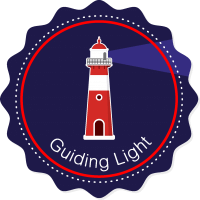Meta means beyond and cognition means thinking. Thus, metacognition means thinking beyond. It is the process where learners plan, monitor, evaluate and then modify their learning approach as needed. Metacognition is considered to have two dimensions (Flavell, 1979). One being metacognitive knowledge where the learners are aware of their cognitive abilities. For example, not remembering the names. The other being metacognitive regulation where the learners monitor and control their cognitive processes. For example, trying another approach to solve any problem. There are four levels of metacognitive learners as defined by Perkins (1992):
-
Tacit learners- those who lack the metacognitive knowledge and do not think of any strategies to solve problems.
-
Aware learners -Those who recognise some of the kinds of thinking that they do.
-
Strategic learners- Those who use various strategies to aid their learning.
-
Reflective learners -Those who reflect upon their learning and revise strategies accordingly.
Metacognition is like an inner voice that guides our thinking and helps us to improve our performance (Pablo Torres). It helps us to become active and independent learners (Mathew Somerville). It helps to engage the learners who are disengaged and disadvantaged (Lee Davis). Metacognition is thus, a powerful tool to enhance the learning across various age groups and subjects. For example, in Story telling class the learners are taught to visualize the story, imagine the settings, events and characters leading to deepen their comprehension and engagement with the text.
In order to understand the way our students learn more effectively metacognitive strategies should be incorporated in the classroom for example:
-
Concept mapping- Strategy to demonstrate the relationship between the ideas.
-
Mnemonics- This technique connects new learning to prior knowledge using visual clues, keywords, rhyming words or acronyms.
-
Reciprocal teaching- This technique is used in reading comprehension where the learners work together to discuss any topic.
-
Metacognitive talk- Verbalizing the thoughts while performing the task.
According to John Hattie, ‘Metacognitive strategies can have an effect size of 0.69, which is considered a high impact on student achievement.’
However, there are many misconceptions regarding metacognition such as: the teachers plays no role in the metacognitive practice of their students, its applicability to older learners only, its deliberate nature. Thus, it is important to clarify misunderstanding to cre Chr ate a mutual comprehension of any idea.
The teachers can make best use of metacognition by helping the learners to plan strategies and monitor their progress towards achieving their goals, make learners understand their mid and long term goals, keeping learners within their zone of proximal development. Along with the teachers the schools can also make the use of metacognition by prioritising professional development, encourage teachers to work together, involving whole school in metacognitive talk and evaluate the impact of new strategies that are implemented.



Thank you for the insight
very informative writeup.